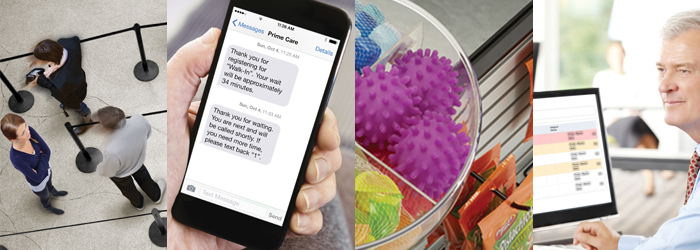Retailing Today recently highlighted five key trends to watch this year. One trend that caught our attention is the idea that brick-and-mortar is “reasserting its importance as a vital part of retail commerce.” Of course we’ve always recognized the value of physical store locations and the role they play in the customer experience, but it is also easy to believe the hype and feel the near-panic of recent years around the idea that e-commerce might render brick-and-mortar obsolete.
Despite the astounding growth of e-commerce sales, Retailing Today reports that it is not overtaking the role of physical stores. Instead, e-commerce and the focus on creating an omnichannel experience for customers is highlighting the role and importance of stores as a critical component of the customer experience.
Stores still hold a commanding lead for how consumers prefer to shop. A recent study by A.T. Kearney found over 90% of shoppers surveyed would prefer to shop in a brick-and-mortar store. And 93% of all retail sales are expected to come from physical stores this year.
If retailers are indeed taking a more balanced view of e-commerce and brick-and-mortar as it relates to creating an omnichannel experience for customers, what does this mean? And what role does queue management play?
We think there are a few key points to consider:
Accentuate the positives, minimize the negatives
Physical stores give customers the ability to touch, feel, and try before they buy. On the other hand, they are prone to long waiting lines, out-of-stock inventory, and crowded parking lots. Taking steps to eliminate or speed up waiting lines, keep customers engaged while they wait, and increase staff productivity can go a long way toward improving customer satisfaction and reducing lost conversions.
Leverage mobile
Shoppers are on their phones comparing prices, checking online inventory, and maybe even choosing to skip your waiting line in favor of ordering online. Use mobile to your advantage. Let customers ‘check in’ to a waiting line, whether for the dressing room, the cosmetics counter, the return line, or the checkout line, and rather than stand in line, let them continue shopping. Send an automated text message when it’s time for them to return for service. The opportunities to use mobile for queue management are far-reaching.
Capitalize on impulse sales.
The A.T. Kearney study mentioned earlier also found that 40 percent of shoppers spend more than they had planned while shopping in brick-and-mortar stores as opposed to just 25 percent spending more than expected when shopping online. From a queue management standpoint, the natural implication is to merchandise the queue. If your customers are standing in your checkout line, they might as well continue to shop. Not only does merchandising in the queue encourage impulse sales, it also keeps customers engaged and distracted while they wait.
Bring in web-style analytics.
From a retailer’s standpoint, e-commerce offers an incredible opportunity to track customer behavior, preference, activities, and sales. Just about anything can be measured in the digital world. Today, there is equally powerful and insightful analytics for the physical store. In the queue, look for technologies that allow you to measure, monitor, and manage wait times, service allocation, and customer arrivals to address issues before they result in lost sales. It’s also possible to tie these queue metrics to merchandise sales in order to optimize the in-queue merchandising mix.
It’s true that brick-and-mortar isn’t going anywhere. But it’s also true that retailers need to evolve their strategies to continue to meet the expectations of customers. What are your thoughts on the role of physical stores in modern retailing?










